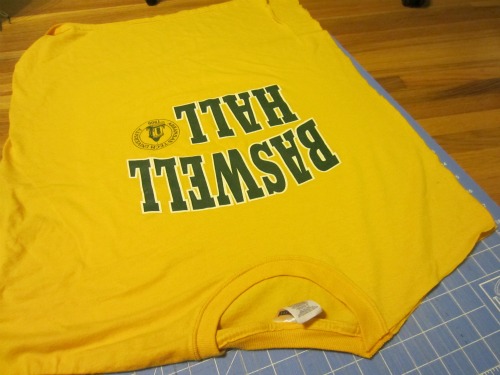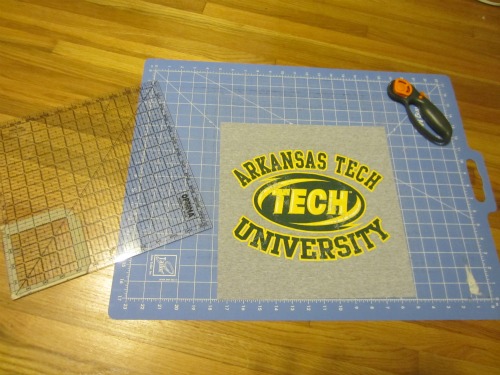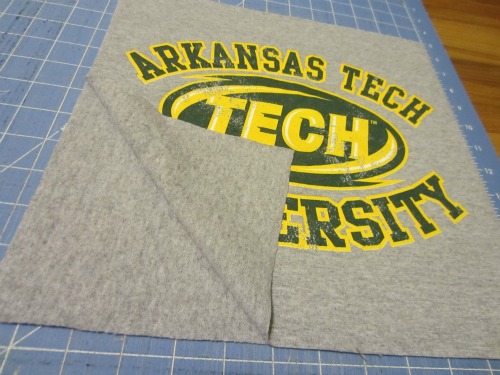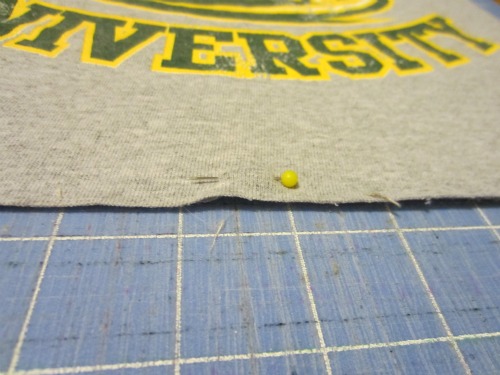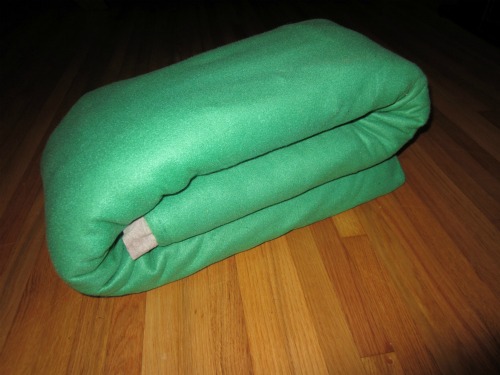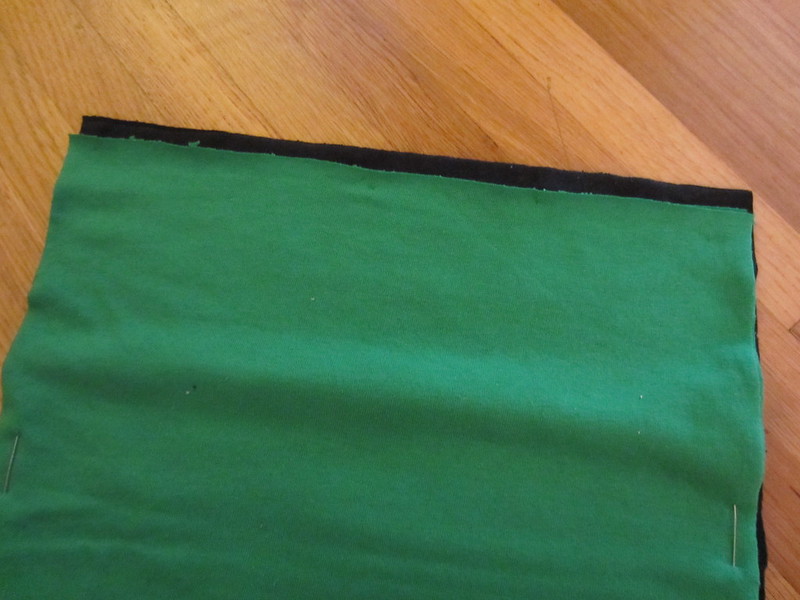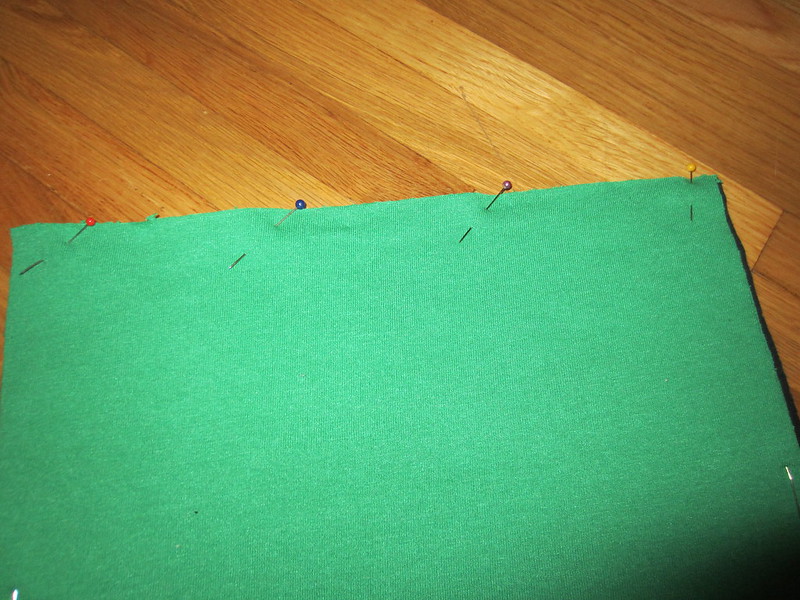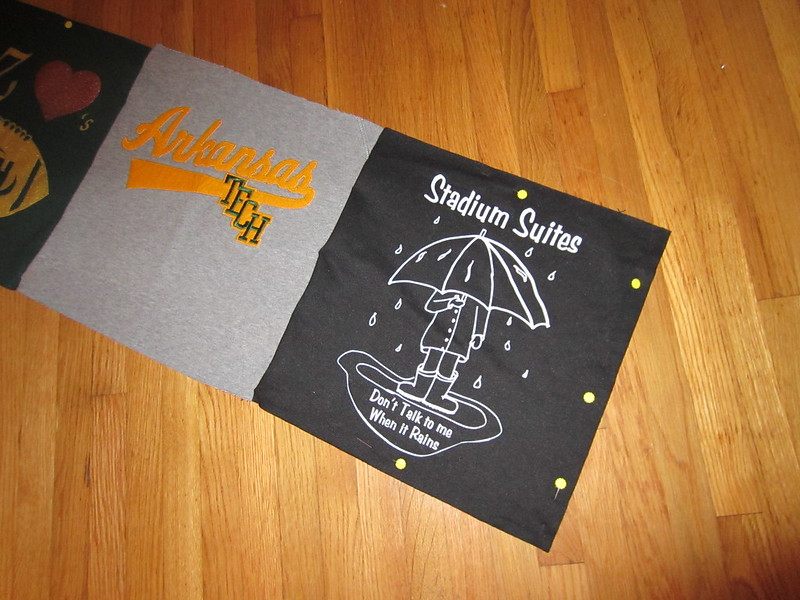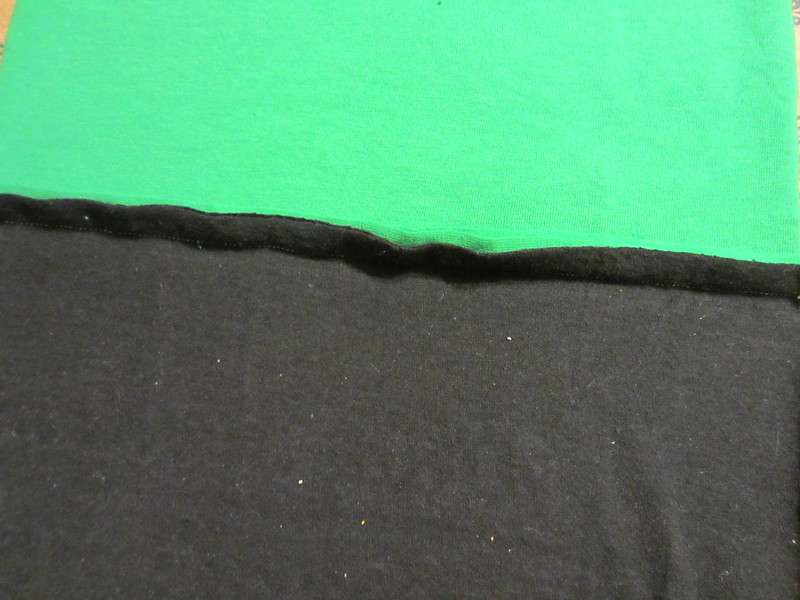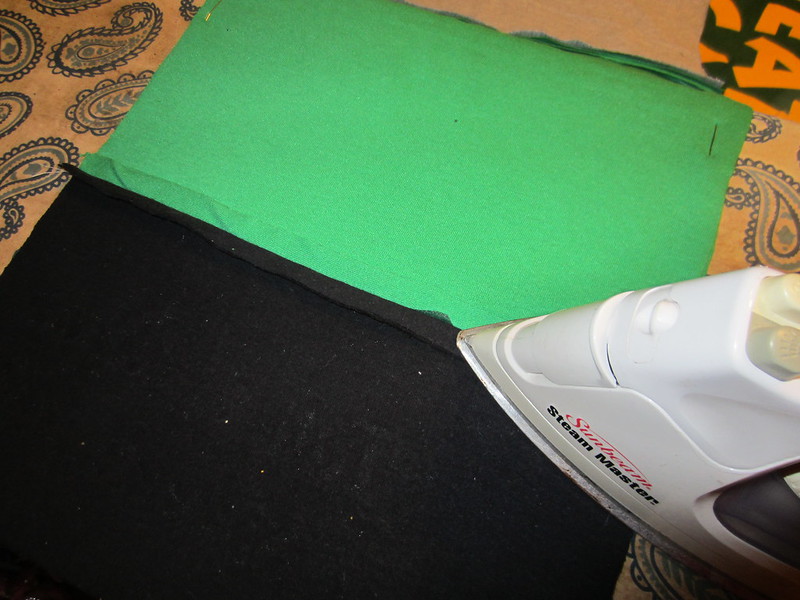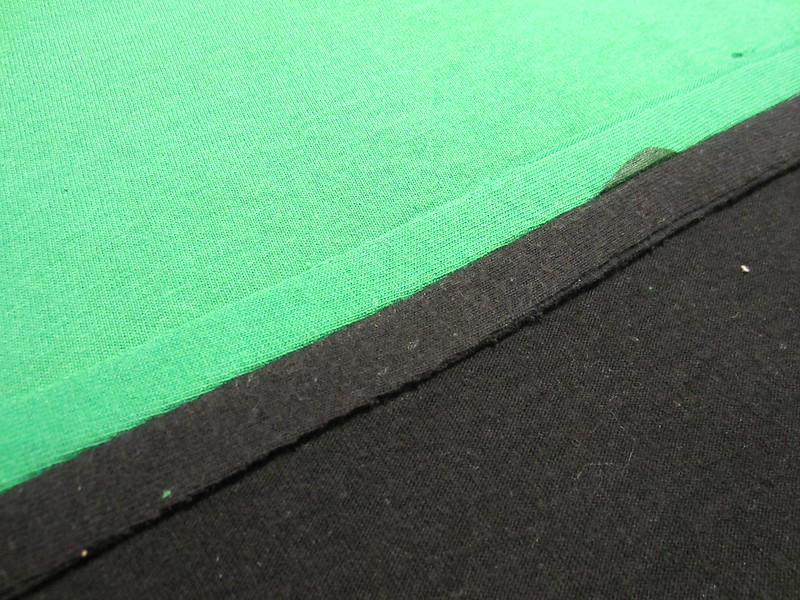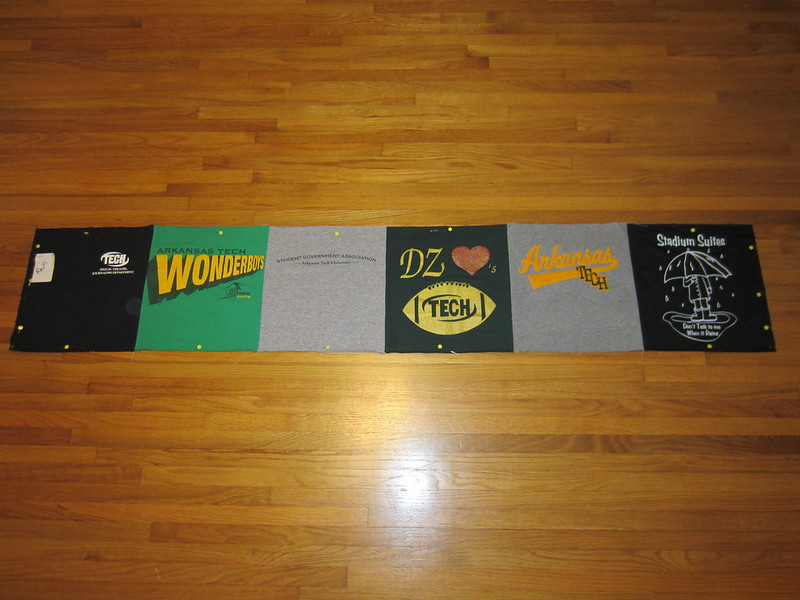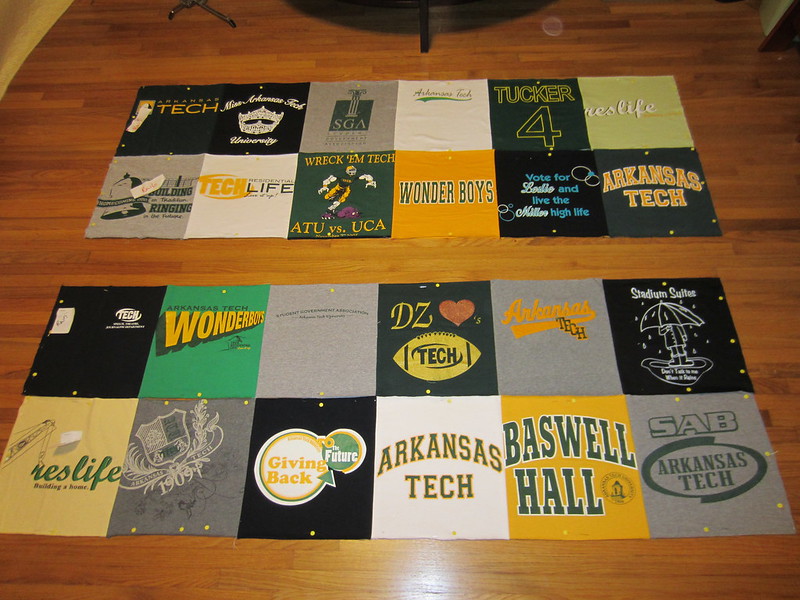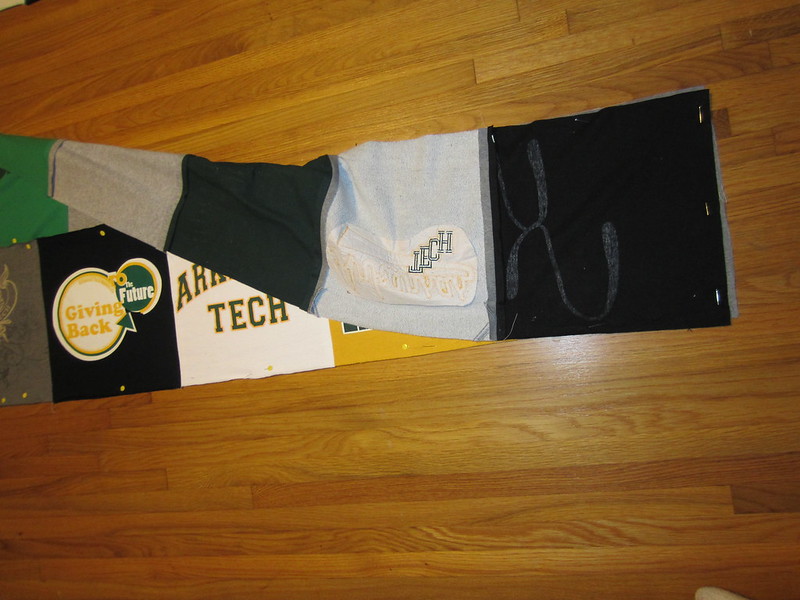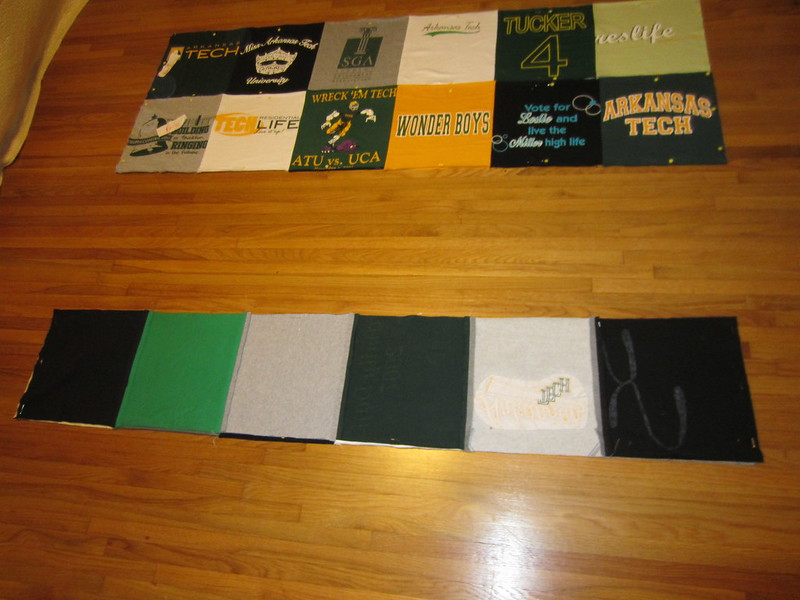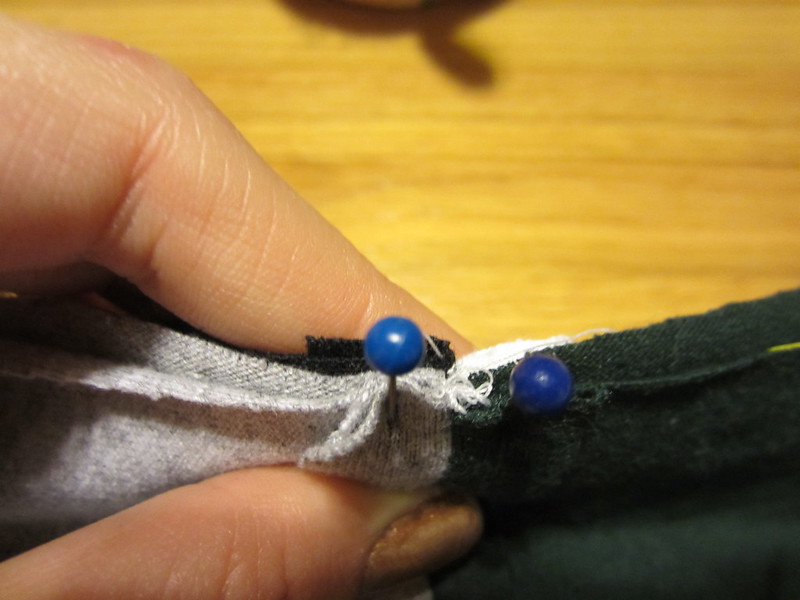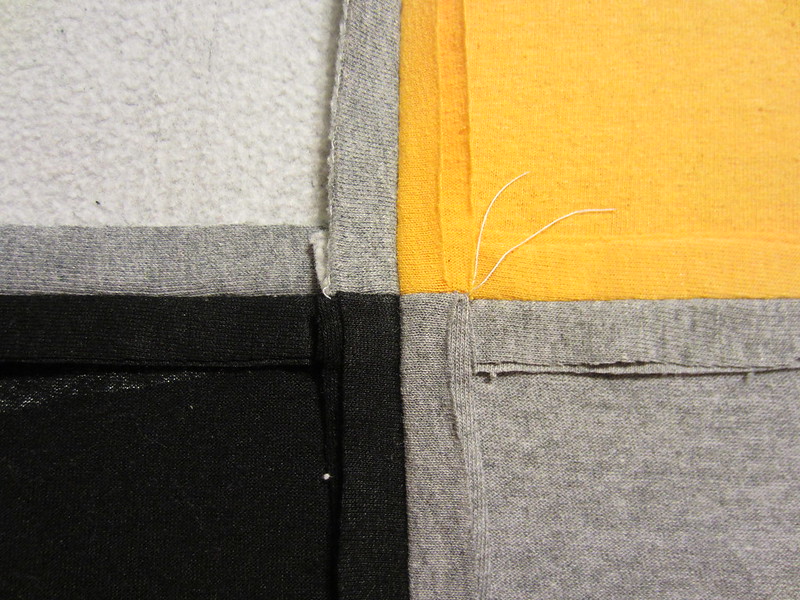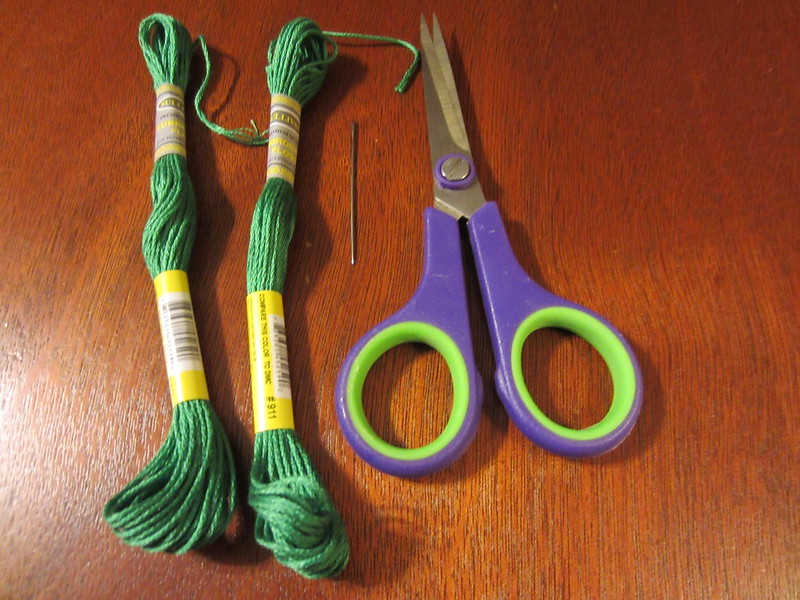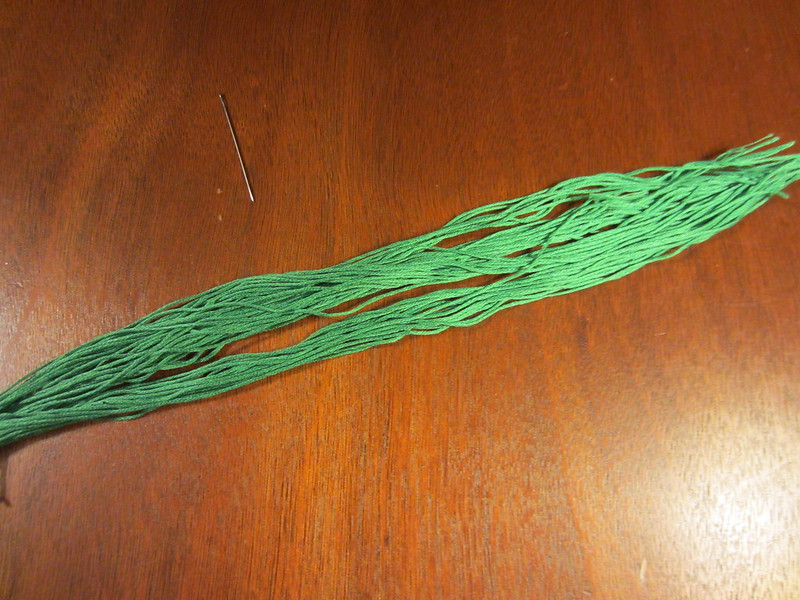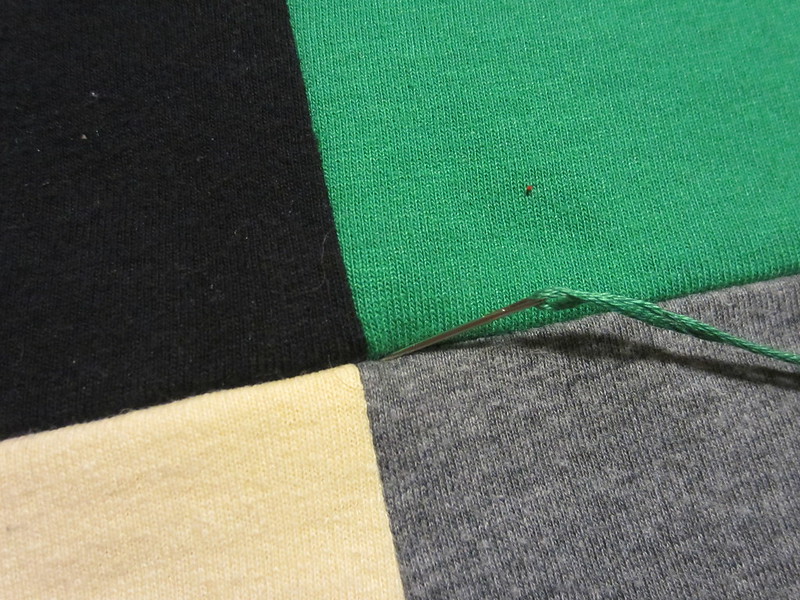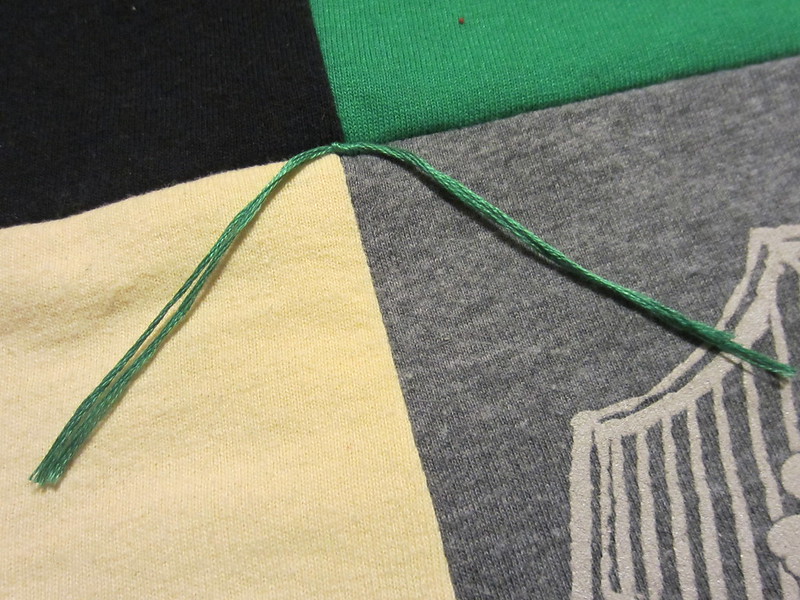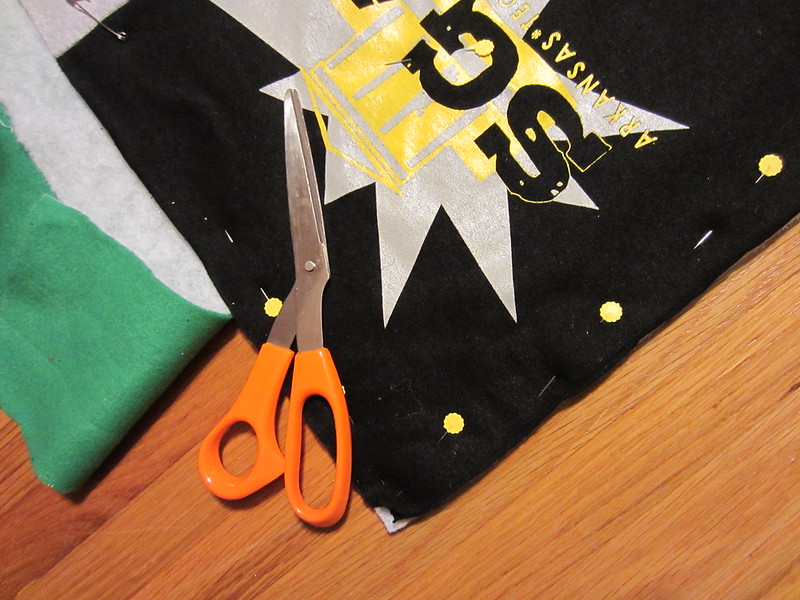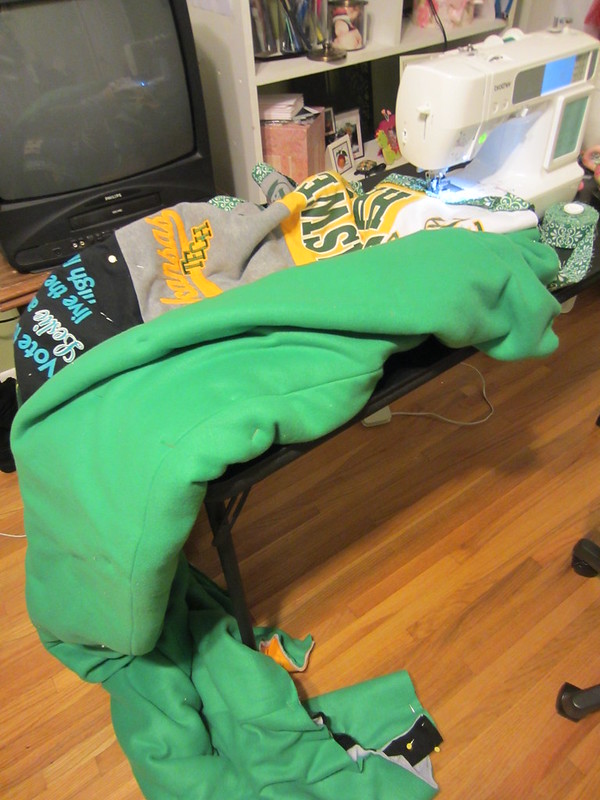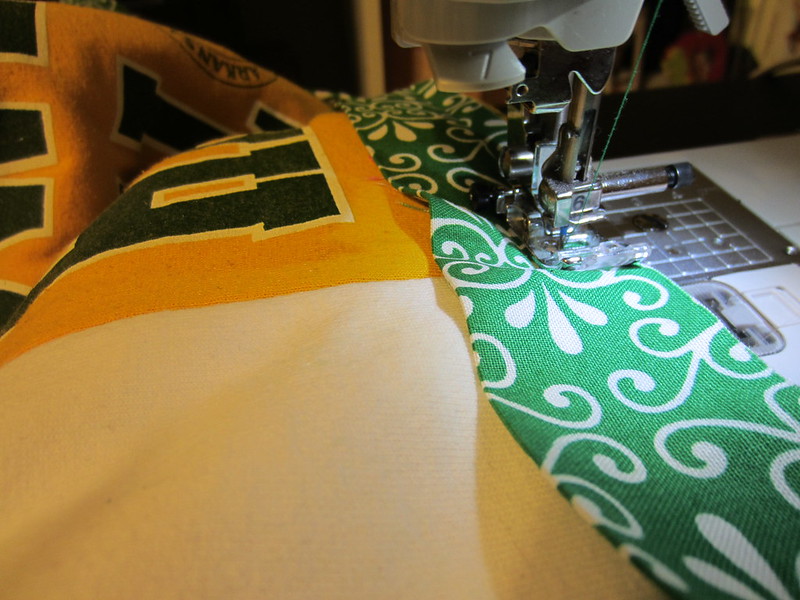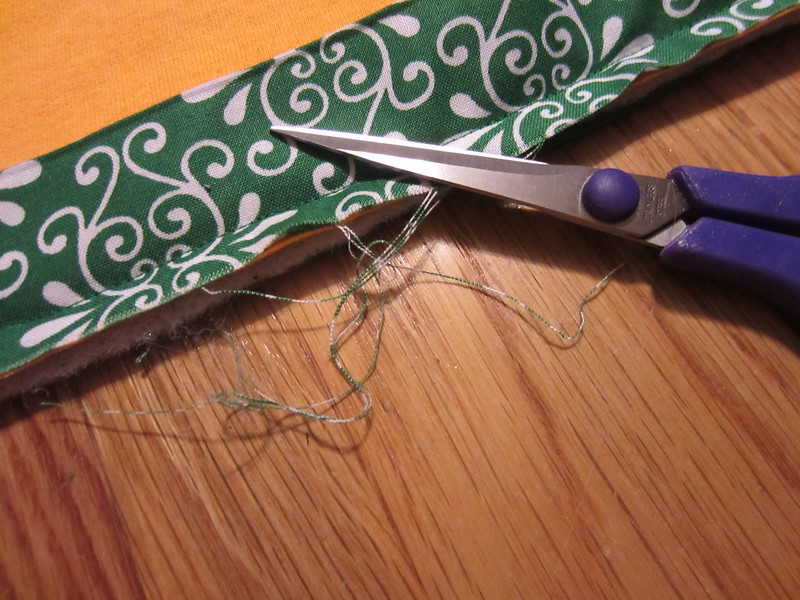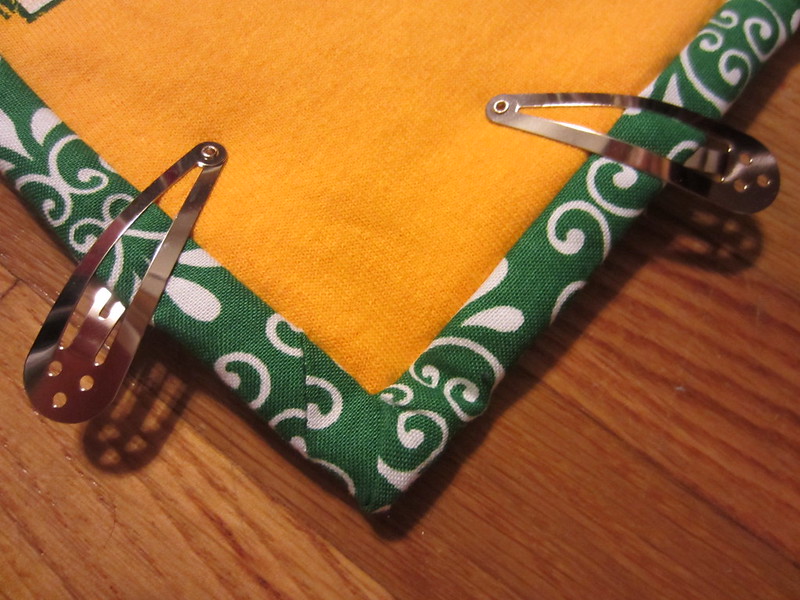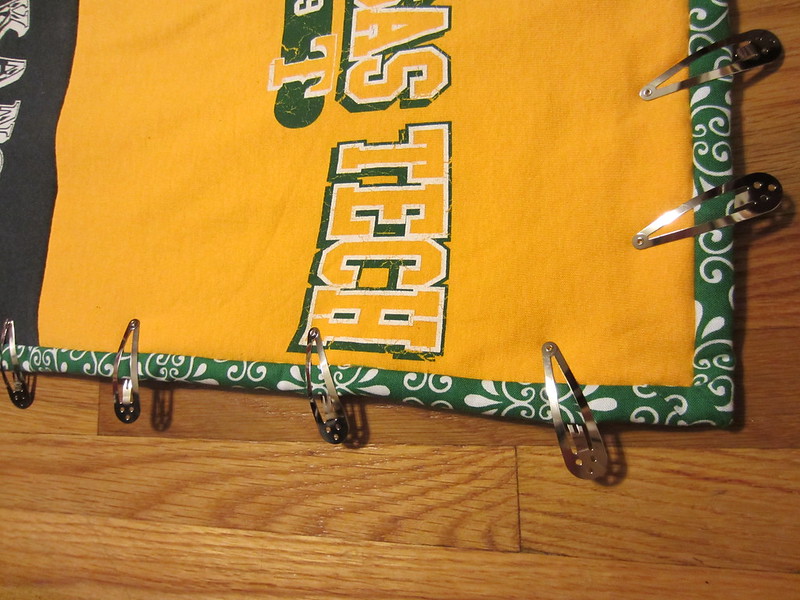DIY T-shirt quilt without fusible webbing
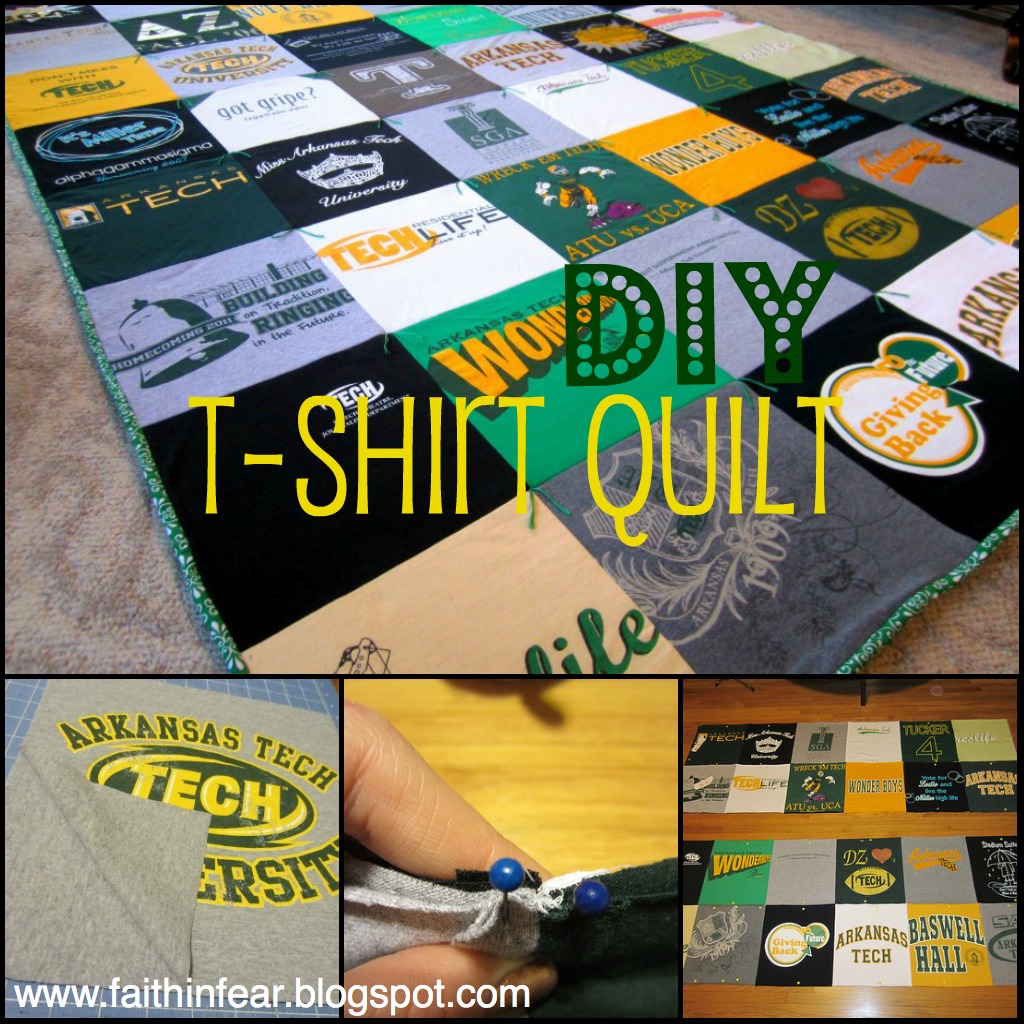
I’ve learned a lot from online tutorials, so I’d like to pass along my method for making t-shirt quilts. I’m a sentimental person, and I always knew a quilt was the perfect way to keep a neat record of some great memories. At the same time, I didn’t want to just start cutting up my shirts…it’s not like I could get a replacement if I ruined it! I searched and searched for a comprehensive tutorial that would meet my needs, and I never found it.
I combined several tutorials into my method, and here is what makes mine different than most: I do NOT use any interfacing (big cost-saver), I do not put any sashing between the quilt squares (mine was already going to be big enough and I wanted to keep this as simple as possible…plus, that’s more fabric to buy, and I’m trying to be budget friendly), and it’s not technically “quilted” (it’s held together by tying embroidery threads through all the layers) .
If you can sew a straight line, you really can make your own t-shirt quilt. But hey, if it seems like this project is too big for you, just send off your shirts to someone who will make it for you. It should only cost $300-800. Or you could make your own for about $30-40. So let’s DIY, shall we?
Materials Needed:
T-shirts
(if using both sides of a shirt on the quilt, you will also need some
other old shirts you can cut up to serve as “interfacing) (Free!)
Batting Low loft is plenty because the shirts and fleece backing make it very warm and heavy.
Fleece fabric for backing. I needed 6 yards because my quilt was wider than the fleece.
Cotton fabric for binding (I used 1 yard of fabric)
2 skeins of embroidery thread (for tying together instead of quilting)
Coordinating thread for your sewing machine (An all purpose thread is good for this)
Sewing machine needles (I used a size 11 for the t-shirts and size 14 for the binding–already had these)
Hand sewing needles (Already had these)
Lots of straight pins and some safety pins (Already had these)
Total cost: $40.50
Full Disclosure:
I am not a sewing or quilting guru and there are other t-shirt quilt tutorials out there. In fact, one of those tutorials might suit your needs or preferences better. At the very least, they are probably a good supplemental read because they may explain something in a different way that makes more sense to you.
If you do not want all your t-shirt squares to be the same size, consider using this tutorial:
Or if you want sashing (strips of coordinating fabric) between your t-shirt squares, consider using this tutorial.
Let's prep your fabrics.
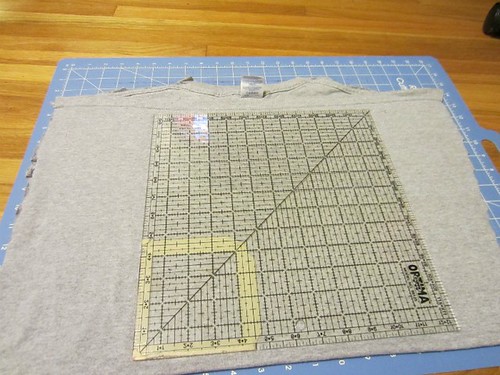
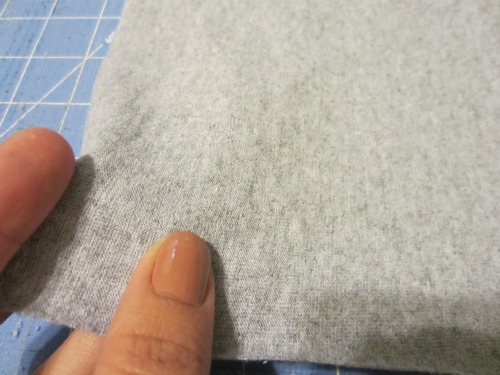
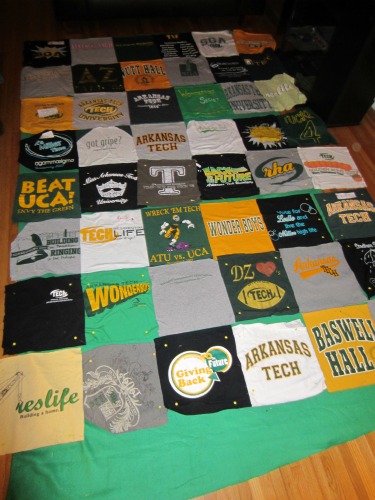
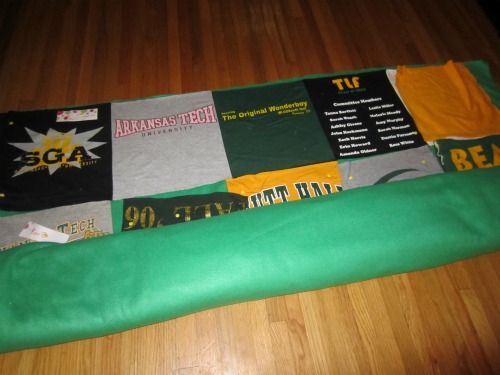
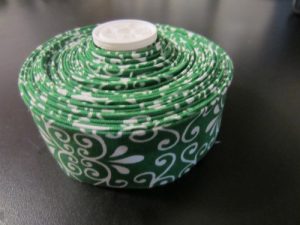
10) I also think it’s good to go ahead and sew your binding strips. I like this tutorial, so I won’t explain that here. Now you have this:
It's time to sew!
There are several ways to do this, but I prefer cutting all my shirt squares then sewing them all. You could also cut two, sew them together, cut one, add it on, etc. If you have a helper, they could cut while you sew. Just find a method that works for you.
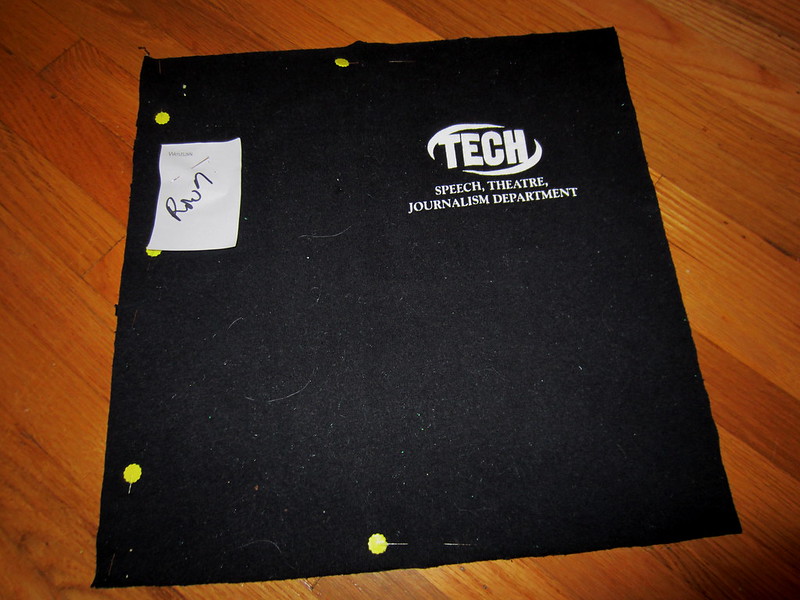
5) Take the square that goes to the right of the last square and also place pins on its top and bottom. Then line up the edges you want sewn together right sides together, and pin. Repeat this until your entire row is pinned together. Be sure to add side pins to the square that is the last one on the right (that will not have another square added to its right).
6) Sew a .5″ seam along all the edges you want sewn together, removing the pins before your sewing needle gets to them.
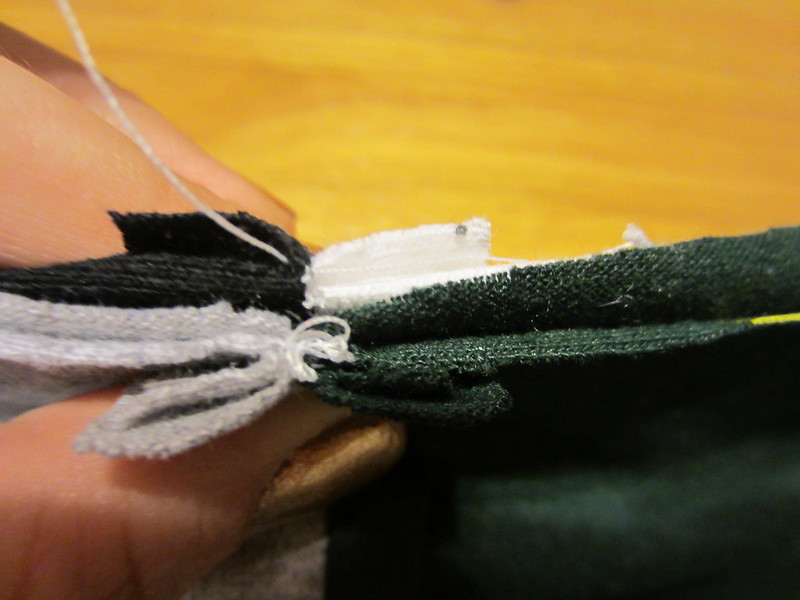
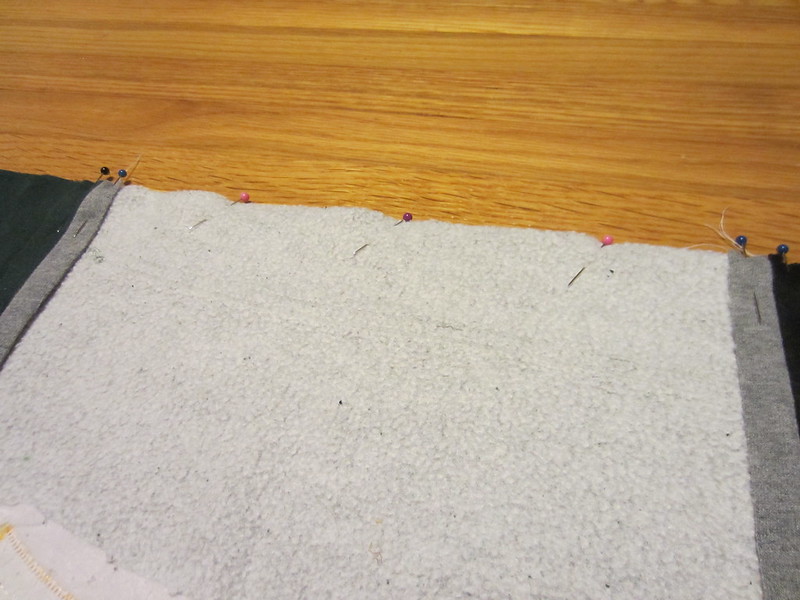
19) Repeat the above steps to sew a new set of two rows together. I recommend sewing groups of two rows together because it lessens the bulk you are dealing with at your sewing machine. Once every row is sewn
to one other row, sew them into groups of four rows. Last, sew your two
groups of four rows together. Now all eight rows are sewn together and your entire quilt top is complete! Keep the outside edge pins in place because you’re about to use them.
Let's finish your quilt!
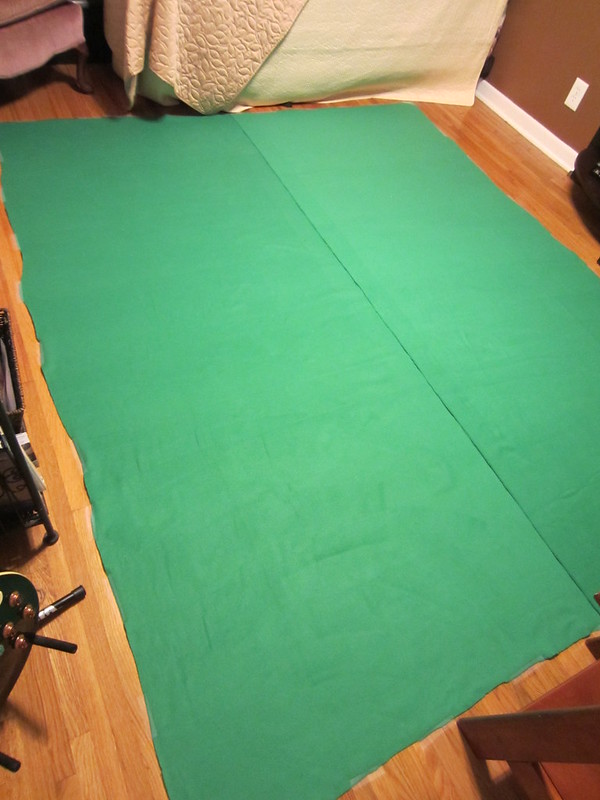
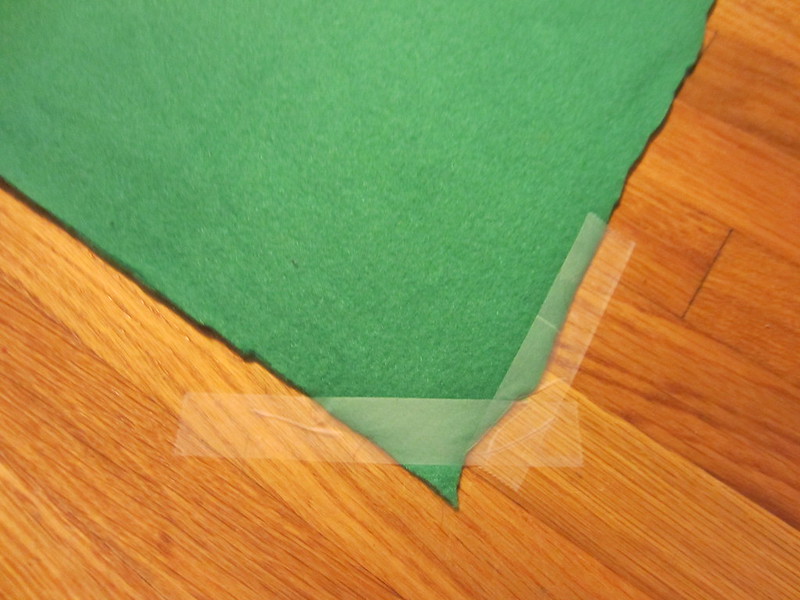
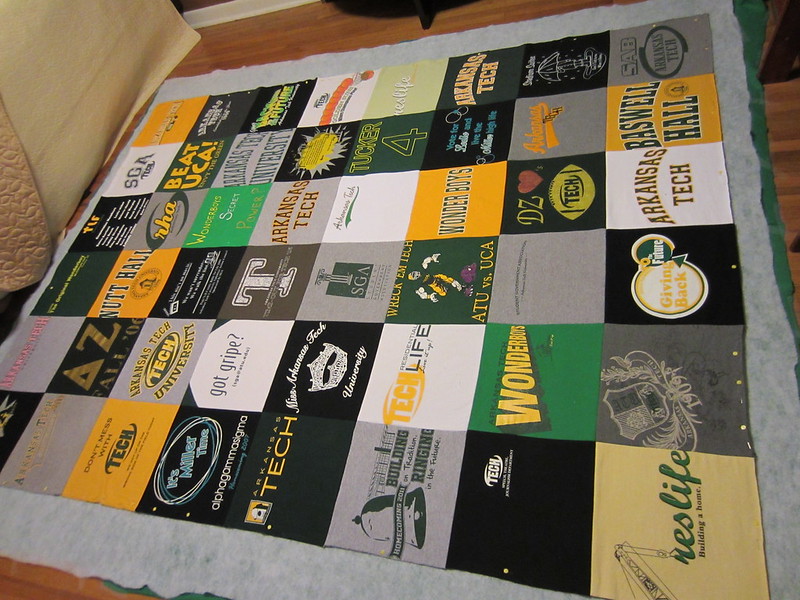
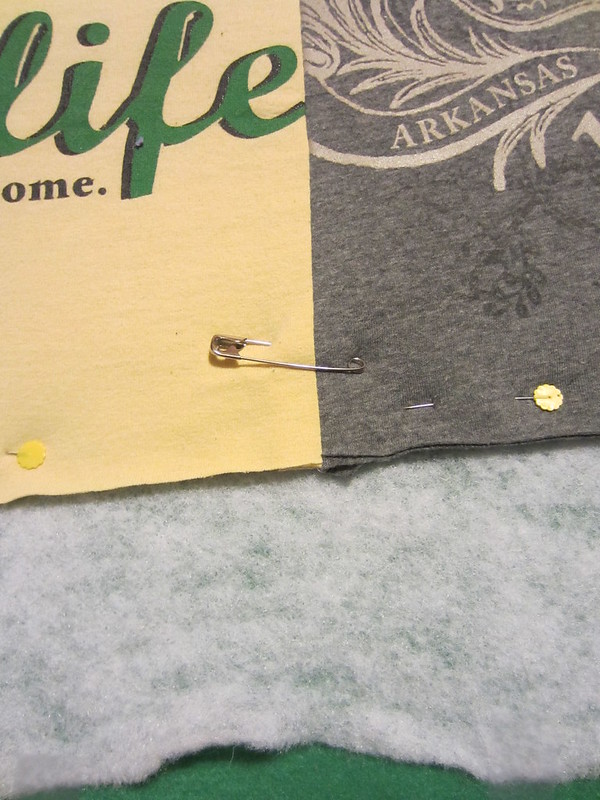
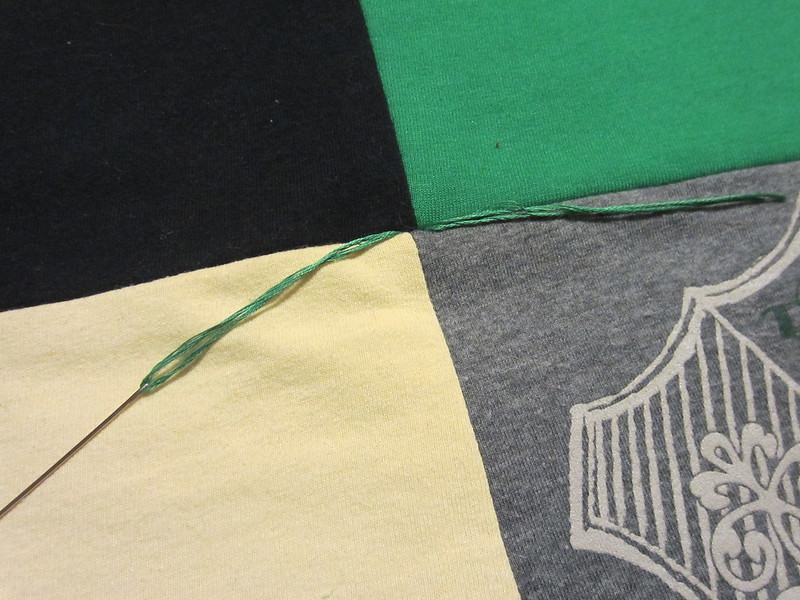
13) Use the following video (not mine, but it’s what I follow) to attach your binding to the quilt. The video says to sew a .25″ seam, but I want my binding to match the rest of my seams, which are .5″. I cut my binding strips 3″ wide to allow for this. I sew about a 3/8″ seam. I’d suggest practicing on some scrap fabric to figure out exactly where your needle should go to get the width you want.
Faith in fear, US
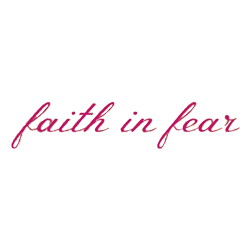
PROFILE
Leslie has a blog where she shares her method for making t-shirt quilts in which she doesn’t use any interfacing.
Main Research Source
- T-Shirt Quilt {Introduction} (01/09/2013)
- DIY T-Shirt Quilt {Part 1} (01/10/2013)
- DIY T-Shirt Quilt {Part 2} (01/11/2013)
- DIY T-Shirt Quilt {Part 3} (01/12/2013)

